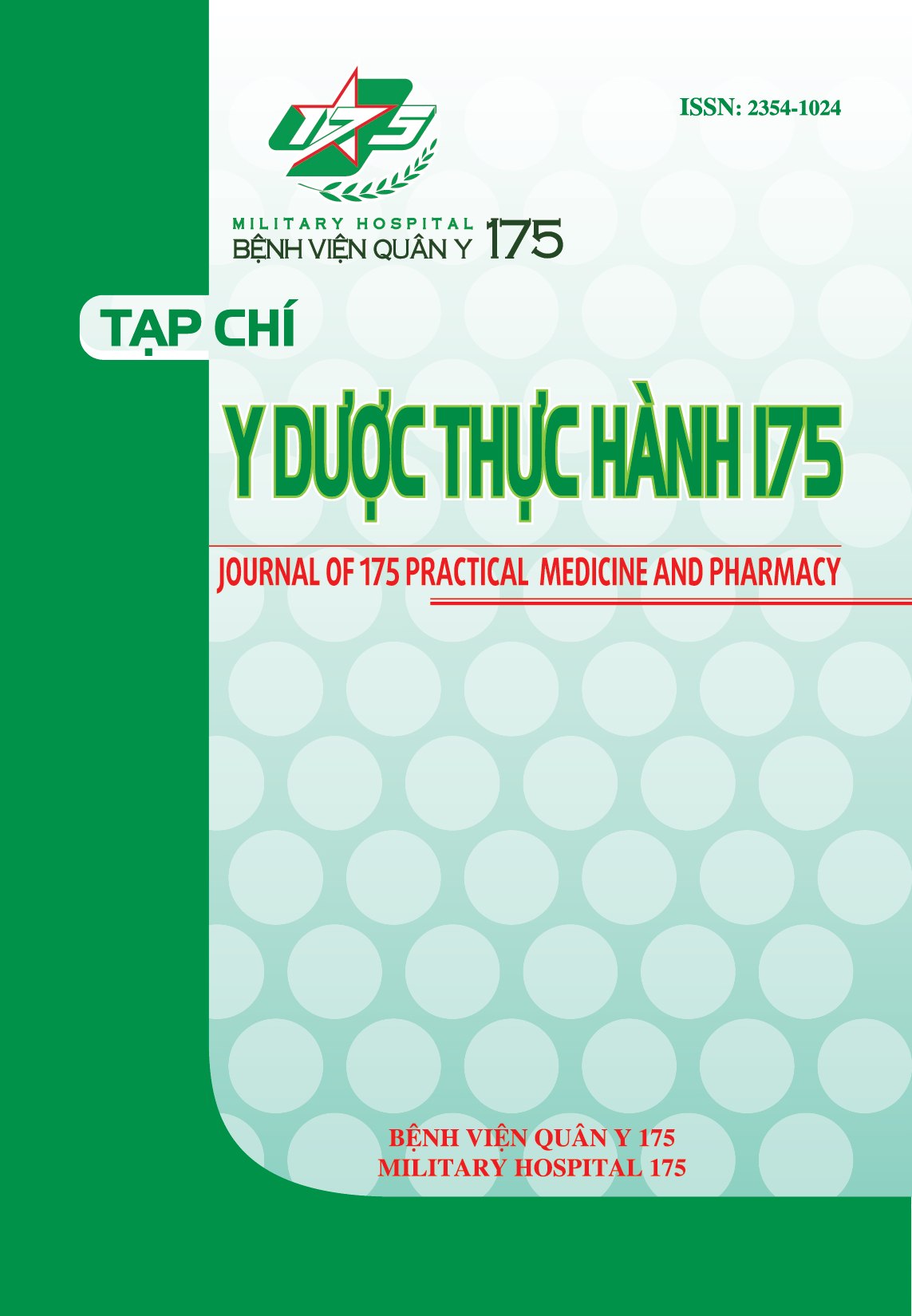EVALUATION OF THE INITIAL RESULTS OF APPLICATION OF MODIFIED BLUMGART ANASTOMOSIS FOR PANCREATODUODENECTOMY AT MILITARY HOSPITAL 175
Authors
DOI: https://doi.org/10.59354/ydth175.2021.105Keywords:
Pancreatoduodenectomy, Pancreato-jejunostomy, Blumgart anastomosisReferences
Herrera J., et al. (2019), “Feasibility, morbidity and mortality in two hundred consecutive cases of pancreaticogastrostomy after pancreaticoduodenectomy”, Cir Esp.
Bassi C., et al. (2017), “The 2016 update of the International Study Group (ISGPS) definition and grading of postoperative pancreatic fistula: 11 Years After”, Surgery, 161(3), 584-591.
Evans D. B. (2018), “What Makes a Pancreatic Cancer Resectable?”, Am Soc Clin Oncol Educ Book, 38, 300- 305.
Fujii T., et al. (2014), “Modified Blumgart anastomosis for pancreaticojejunostomy: technical improvement in matched historical control study”, J Gastrointest Surg, 18(6), 1108- 15.
Garg P. K., et al. (2018), “The Role of Prophylactic Octreotide Following
Pancreaticoduodenectomy to Prevent Postoperative Pancreatic Fistula: A Meta- Analysis of the Randomized Controlled Trials”, Surg J (N Y), 4(4), e182-e187.
Kakita A., Yoshida M., Takahashi T. (2001), “History of pancreaticojejunostomy in pancreaticoduodenectomy: development of a more reliable anastomosis technique”, J Hepatobiliary Pancreat Surg, 8(3), 230-7.
Katayama H., et al. (2016), “Extended Clavien-Dindo classification of surgical complications: Japan Clinical Oncology Group postoperative complications criteria”, Surg Today, 46(6), 668-85.
Kawakatsu S., et al. (2018), “Comparison of pancreatojejunostomy techniques in patients with a soft pancreas: Kakita anastomosis and Blumgart anastomosis”, BMC Surg, 18(1), 88.
Kojima T., et al. (2018), “Modified Blumgart anastomosis with the “complete packing method” reduces the incidence of pancreatic fistula and complications after resection of the head of the pancreas”, Am J Surg, 216(5), 941- 948.
Li Ya-Tong, et al. (2019), “Effect of Blumgart anastomosis in reducing the incidence rate of pancreatic fistula after pancreatoduodenectomy”, World journal of gastroenterology, 25(20), 2514-2523,
McMillan M. T., et al. (2014), “Prophylactic octreotide for pancreatoduodenectomy: more harm than good?”, HPB (Oxford), 16(10), 954-62.
Perinel J., Adham M. (2019), “Preoperative biliary drainage for resectable or borderline resectable periampullary tumor: what is the best management?”, Hepatobiliary Surg Nutr, 8(4), 398-400.
Scheufele F., et al. (2017), “Preoperative biliary stenting versus operation first in jaundiced patients due to malignant lesions in the pancreatic head: A meta-analysis of current literature”, Surgery, 161(4), 939-950.
Sugiura T., et al. (2015), “Impact of bacterial contamination of the abdominal cavity during pancreaticoduodenectomy on surgical-site infection”, Br J Surg, 102(12), 1561-6.
Waliye H. E., et al. (2017), “Utility of feeding jejunostomy tubes in pancreaticoduodenectomy”, Am J Surg, 213(3), 530-533.
Wang S. E., et al. (2016), “Comparison of Modified Blumgart pancreaticojejunostomy and pancreaticogastrostomy after pancreaticoduodenectomy”, HPB (Oxford), 18(3), 229-35.
Downloads
PDF Downloaded: 71










